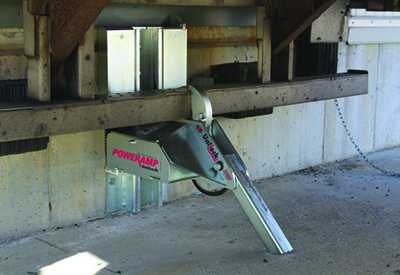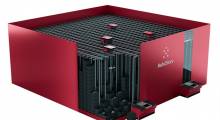D&G, a cold storage and transportation company in Germantown, Wisc., operates a distribution center with several loading docks, all equipped with vertical-storing levelers and truck-positioned vehicle restraints (TPR). After upgrading its vehicle restraints, the company improved safety and efficiency at the dock.
The company’s TPR vehicle restraints would occasionally bind up. Momentum during loading and unloading caused the trailer to move forward and the rear impact guard (RIG), pressed into the restraint, didn’t allow the hook to disengage. This “RIG wedge” would force the truck driver to reverse the trailer to release the restraint.
Based on a standard TPR, the new vehicle restraints (Poweramp) has a cam design that first rotates the hook away from the rear impact guard to release RIG wedge pressure before it rotates down into a stored position. This makes the restraint universally effective on any obstructed RIG, including intermodal trailers.
According to the general manager at the facility, another advantage is a unique locking mechanism that prevents the hook from being forced down, so trailers are always secured even if pressure is applied from the RIG during the loading/unloading process.
After installing the restraints, the company eliminated RIG wedge, no matter what trailer type. This convenience has helped improve efficiency at the loading docks.
“Our trucks were being secured to the docks, but the restraint was getting stuck when pressure was applied,” the general manager adds. “The new restraints have saved us a lot of time by not needing the trucks to reverse each time we want to release the trailer.”
Article topics







